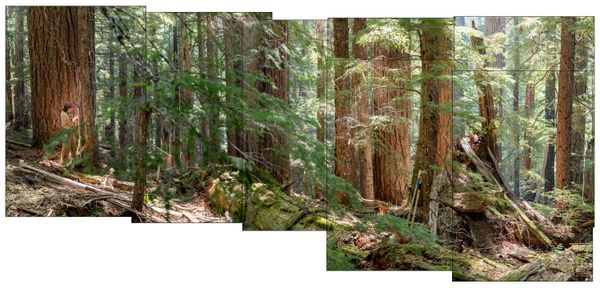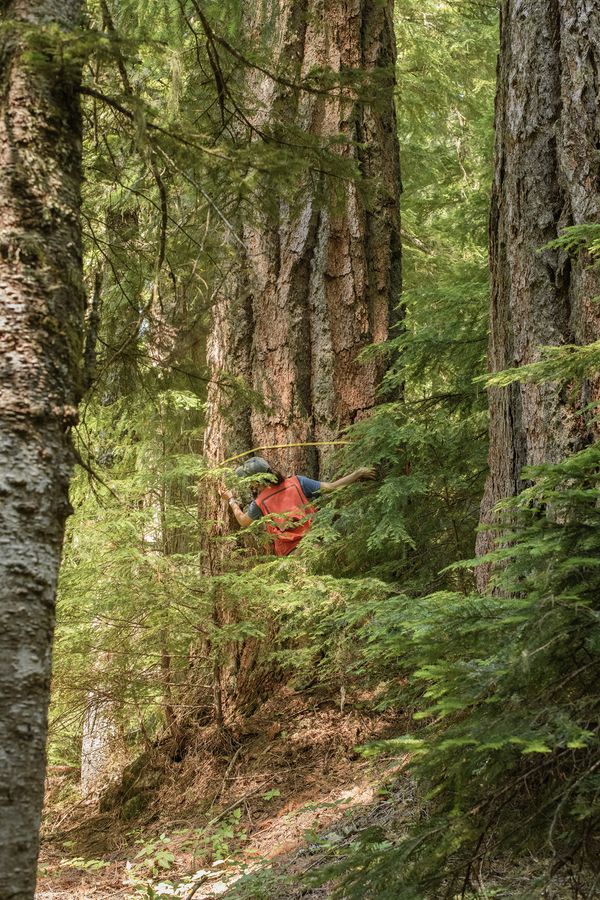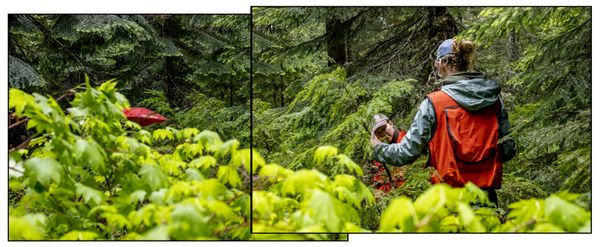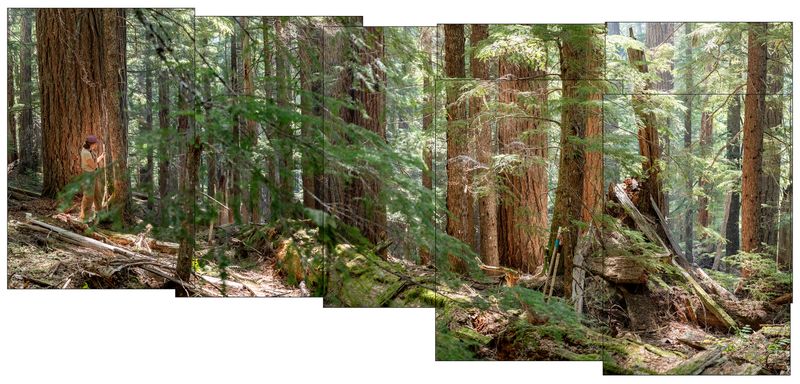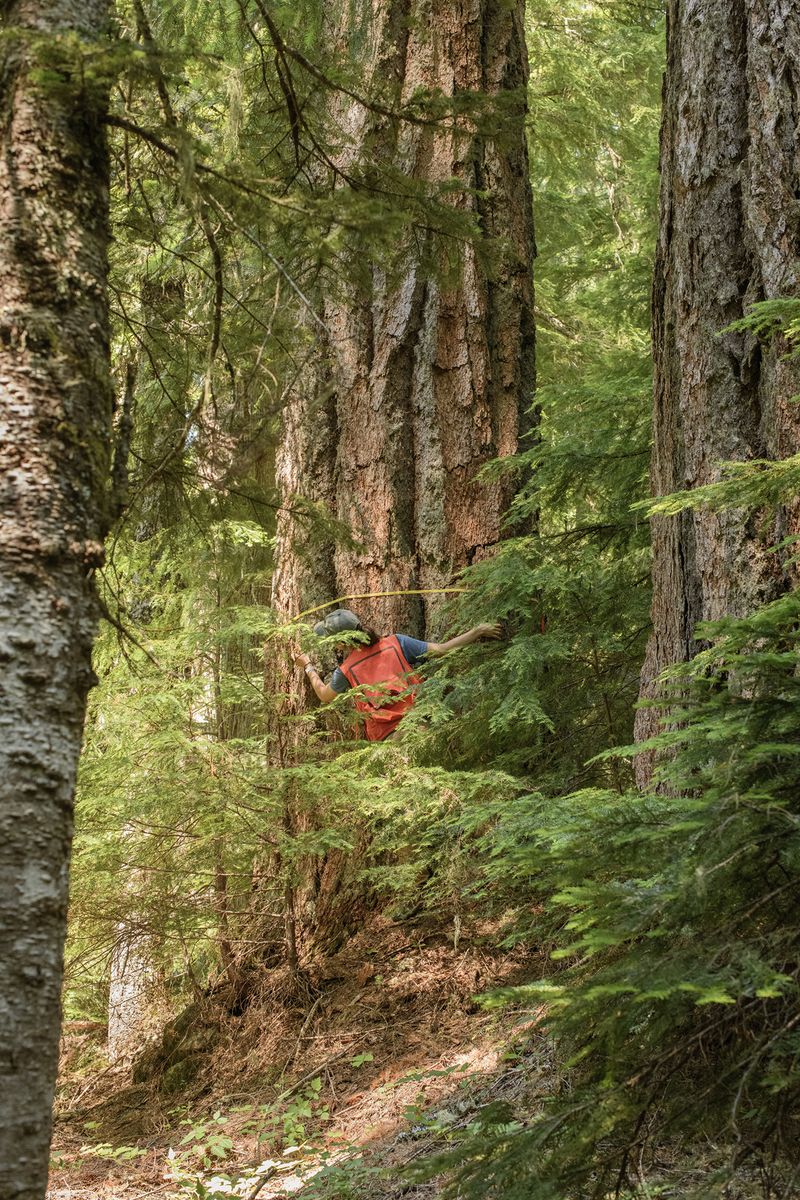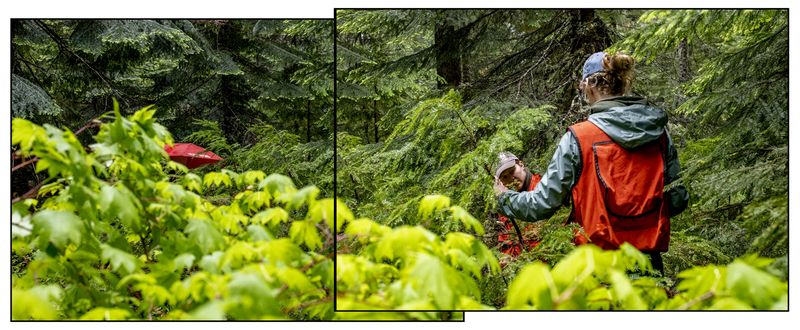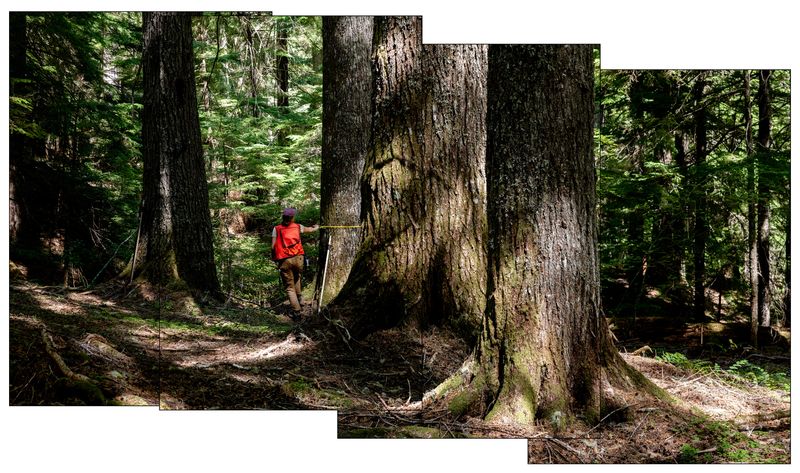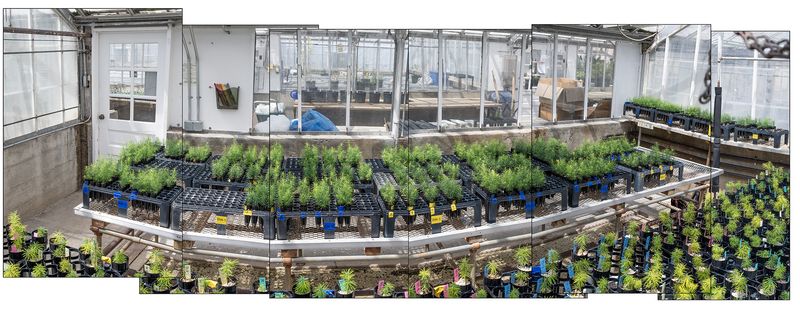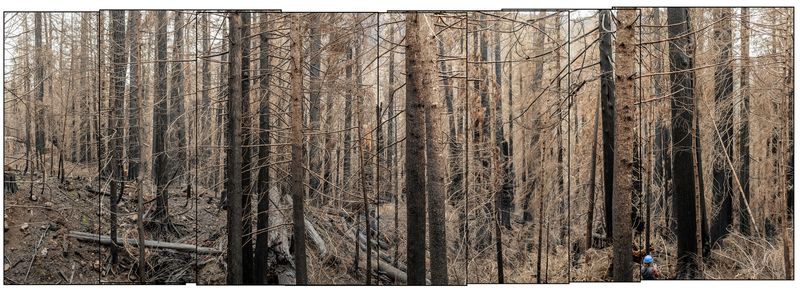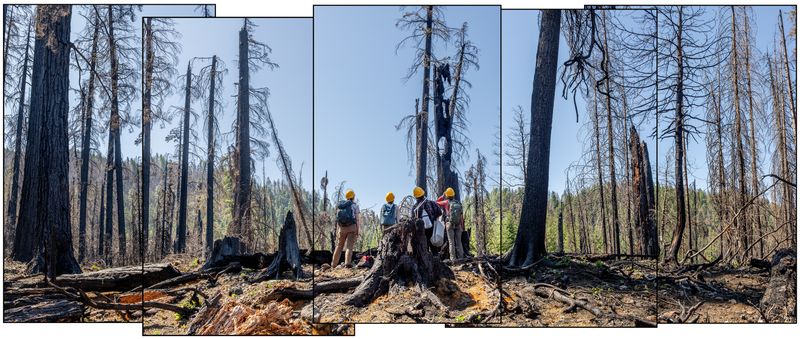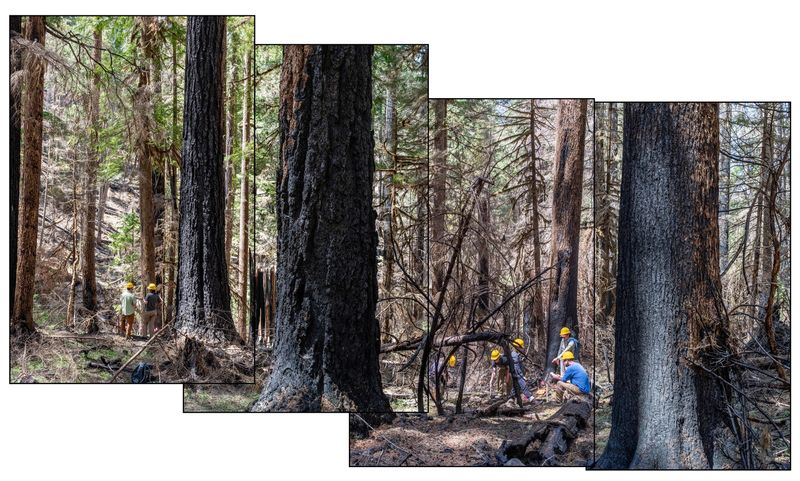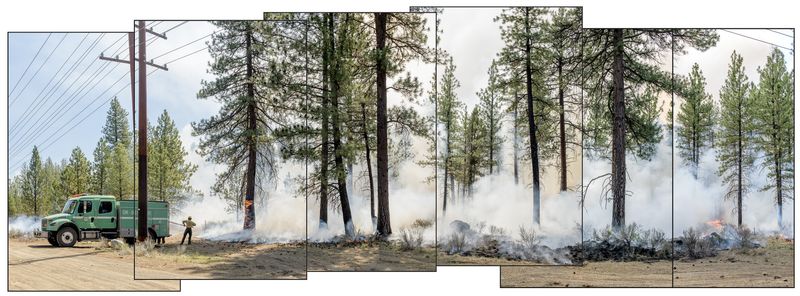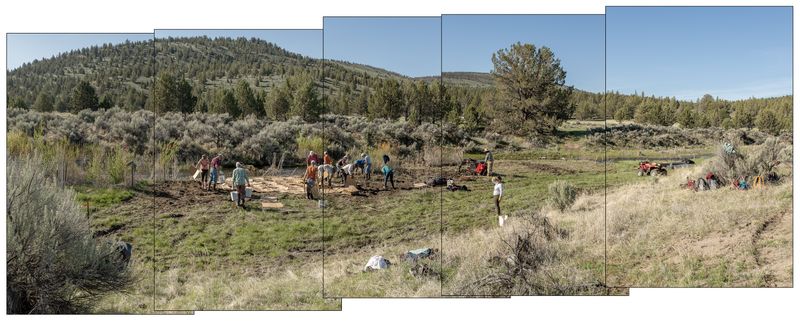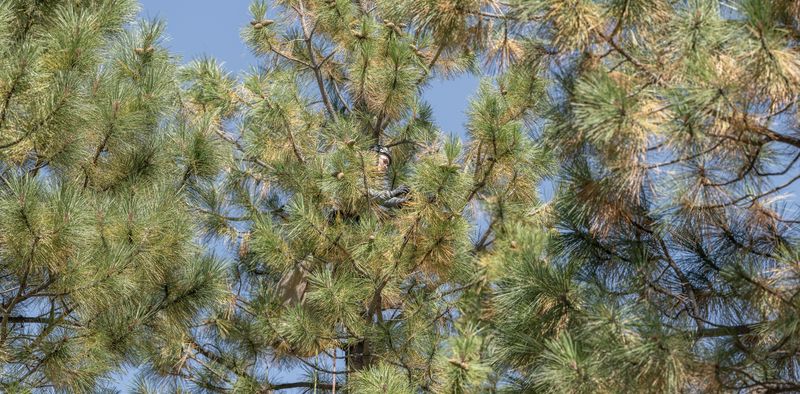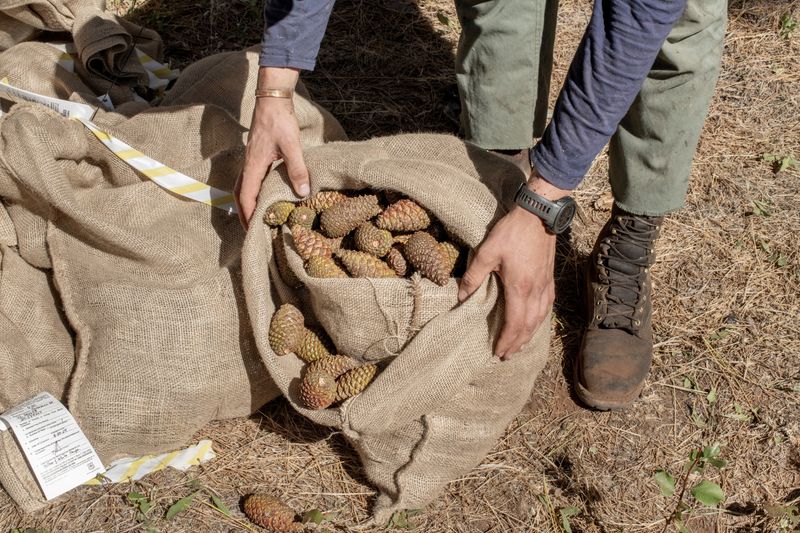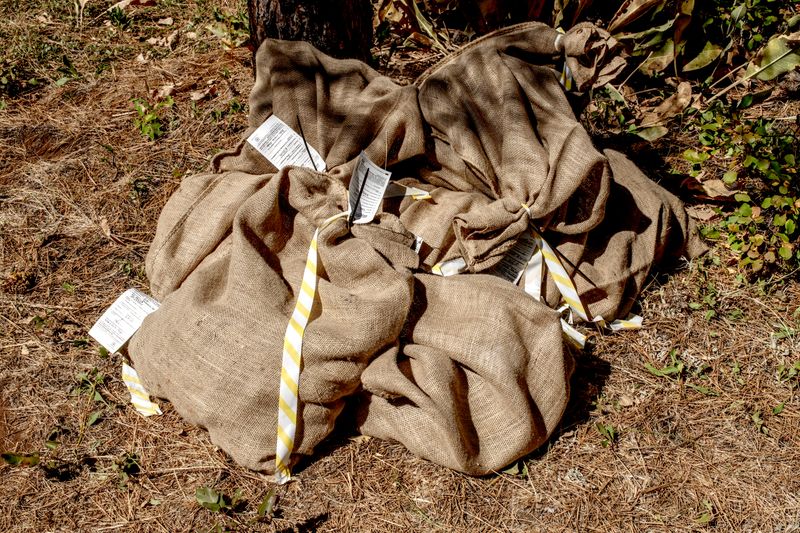For the Love of Trees
-
Dates2022 - Ongoing
-
Author
- Location United States, United States
For the Love of Trees is an exploration of the work of environmentalists, scientists, loggers, and foresters. Since 2021 I have immersed myself each summer and fall in different locations in Oregon where tree people work.
For the Love of Trees explores the many ways we humans rely on trees. I am photographing those who try to make a difference in a world threatened by climate change and environmental uncertainty: those who practice sustainable logging and planting techniques and those who study, re-forest, or protect trees (e.g., scientists, firefighters, loggers, environmentalists, and Indigenous people). I see this work in conversation with both historical and contemporary paintings and photographs of powerful people doing great and not-so great things. The people in my photographs are not famous, but they are doing great work. They are the caretakers of trees (and by extension the plants and animals who rely on the trees) and my photographs pay tribute to their efforts.
The work submitted in this application is mostly from my work following scientists and summer crews in the H.J. Andrews Experimental Forest (images 1-11). The Andrews is a 16,000-acre ecological site known for its 200-year research studies. In 2022 I met with Dr. Joseph LaManna, a scientist conducting a long-term study of the trees and how they affect the plants that live below them. I follow Dr. LaManna and his crew every summer while they carry out their research. Climate change is altering how the forest performs and Dr. LaManna is hoping to understand how the forest will adapt over time, both in lower and upper elevations. In 2023, Dr. LaManna expanded his study in collaboration with Dr. Posy Busby, whose research studies non-pathogenic fungi that live in plants, called endophytes, and tests how endophytes influence plant disease severity. Together, they’ve collected cones in the Andrews (Western Hemlock and Douglas-fir) and plan to plant seedlings back in the forest to study how endophytes help, hinder, or are neutral in the survival of the seedlings. In 2023, a fire tore through 65% of the Andrews. While I will continue to follow Dr. LaManna and his crew, my work is beginning to expand as I look at the effects of fire and how the forest rebounds.
Images 12 and 13 are from Central Oregon TREX firefighters-in-training conducting a prescribed burn. This practice burns vegetation and decaying material for ecological rehabilitation or to create a defensive line by cutting down on fire fuels.
Each year The Oregon Natural Desert Association (ONDA) volunteers do environmental rehabilitation projects in Central Oregon. In 2023 I followed them as they planted willow and cottonwood trees as part of a restoration project along Oregon’s Crooked River (images 14-16). The area was once a cattle ranch and the area along the river was beaten down. With the efforts of ONDA, it is hoped that a future lush riparian area will encourage beavers to return. As a keystone species, their return will also improve the fish population and the quality of the water.
Recently, I made connections with those working to improve the Fremont-Winema Forest, which has burned six times between 2018-2021. Nearly two-thirds of the forest lost 75% or more live tree cover due to high severity fire. Two weeks ago, I followed forest crewmembers as they collected pinecones from Ponderosa pines. While there is a small seed bank, with the unprecedented fires since 2018, there is a scarcity of seeds, and a larger supply is urgently needed.
Moving forward, I will continue my work in the Andrews and with ONDA and begin a new phase in the Fremont. My new photographs will show those working towards forest health, restoration, and post-fire recovery in the Fremont-Winema Forest. I will photograph the entire process from gathering pinecones for their seeds, to documenting the start-up and maintenance of a much-needed seed bank for southern Oregon, to the re-planting of seedlings. As imperfect as humans are when it comes to taking care of the environment, I am inspired to tell the story of those who put into action the latest scientific forest remediation practices.
About the multi-paneled photographs with the black lines: The images are intended to be mounted separately on aluminum and stacked so that some panels come off the wall. Each panel is 40” high and the length is 65” to 150”, depending on the number of panels. The forest is massive and so the prints must be as well.
